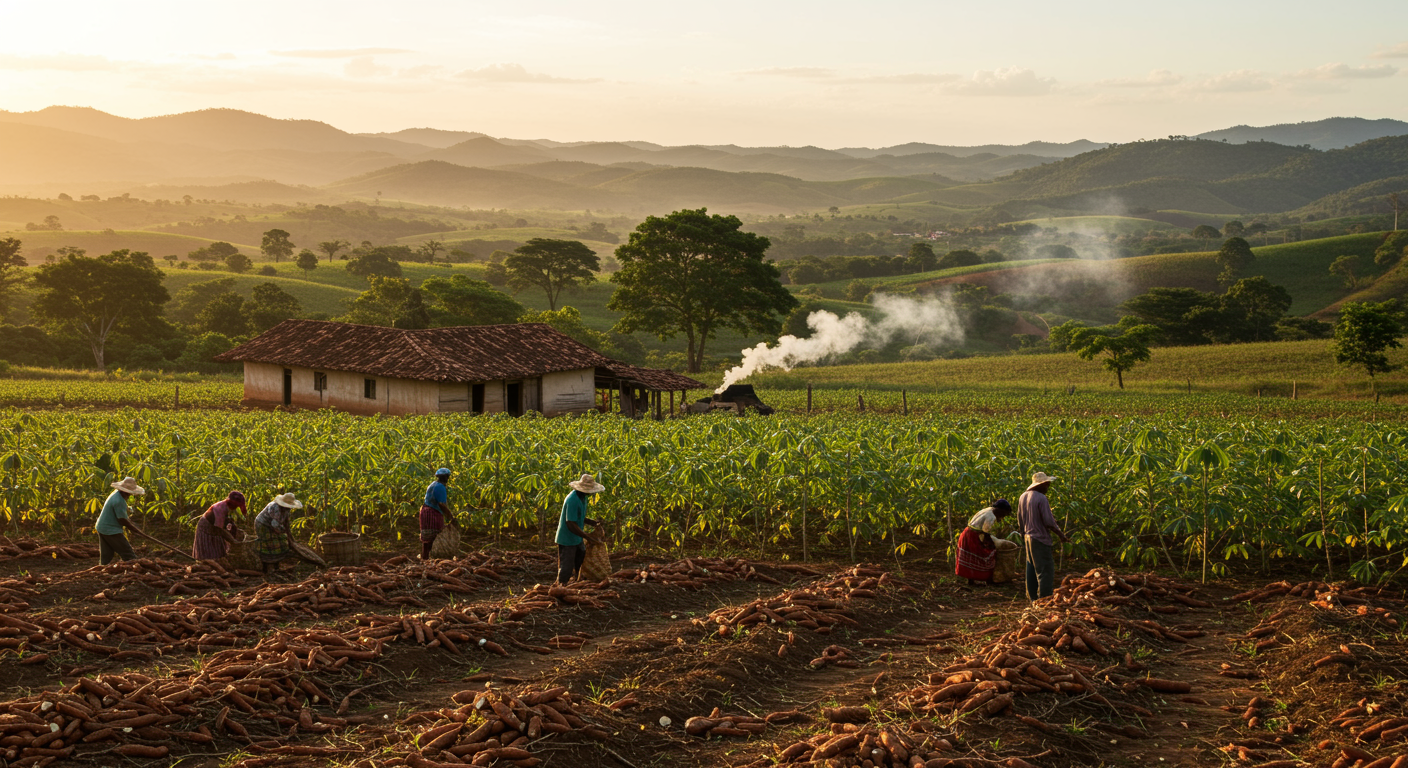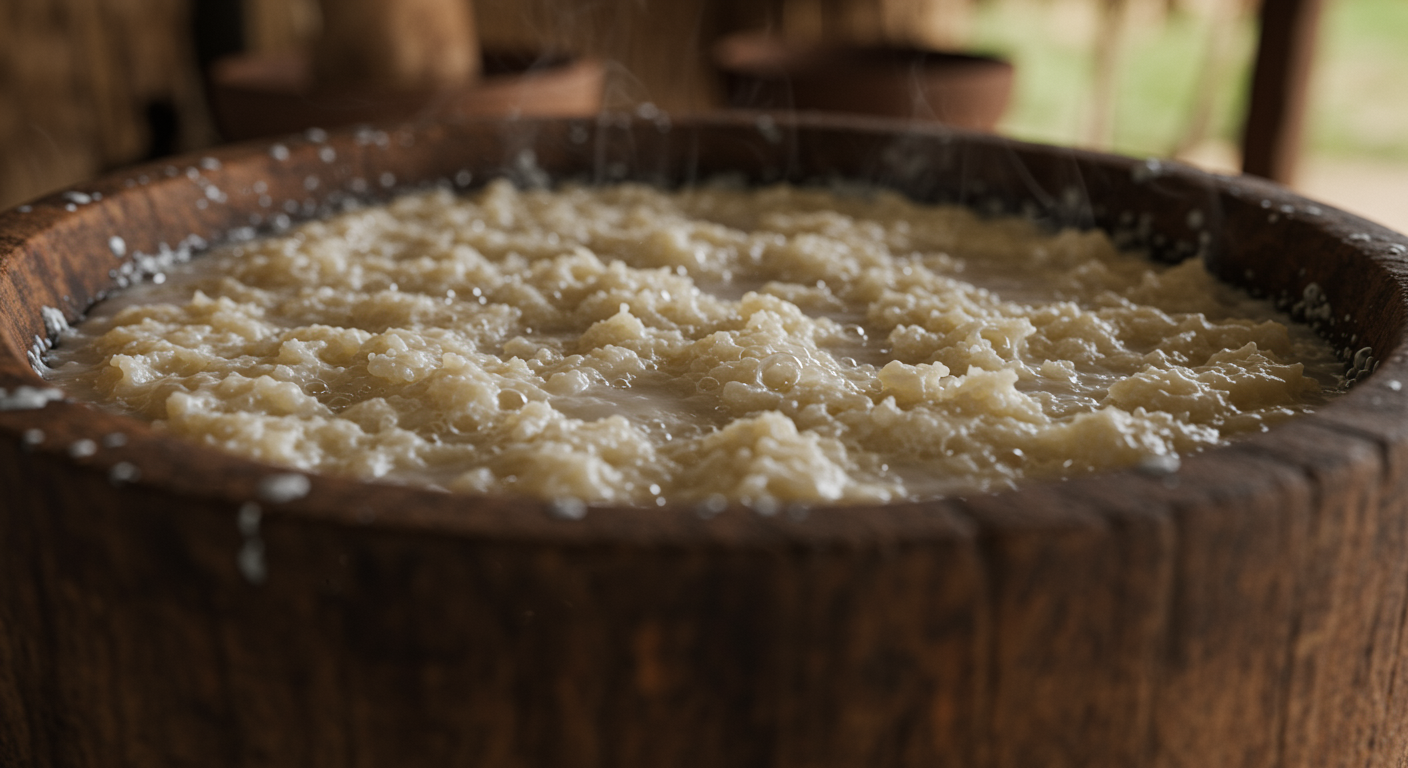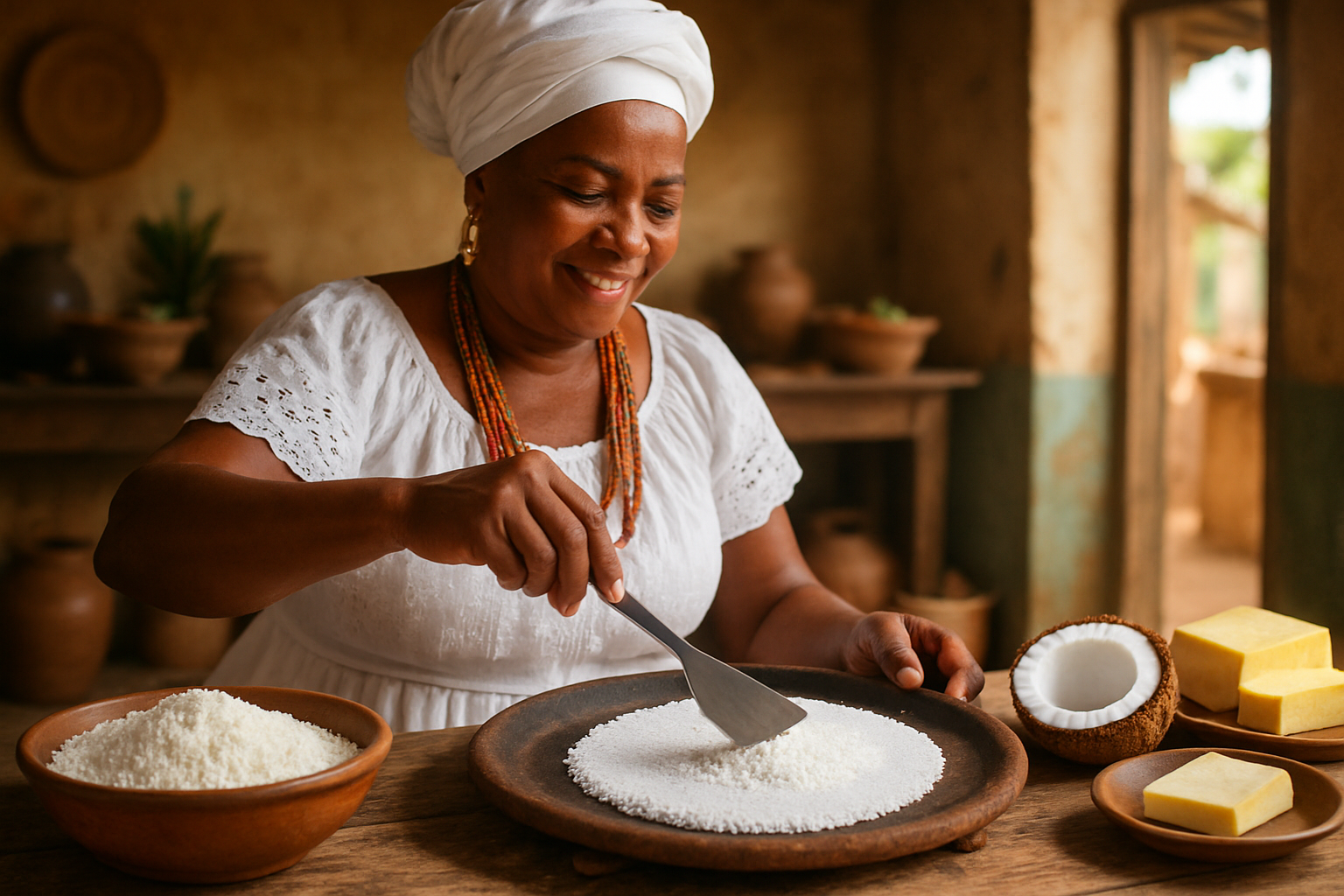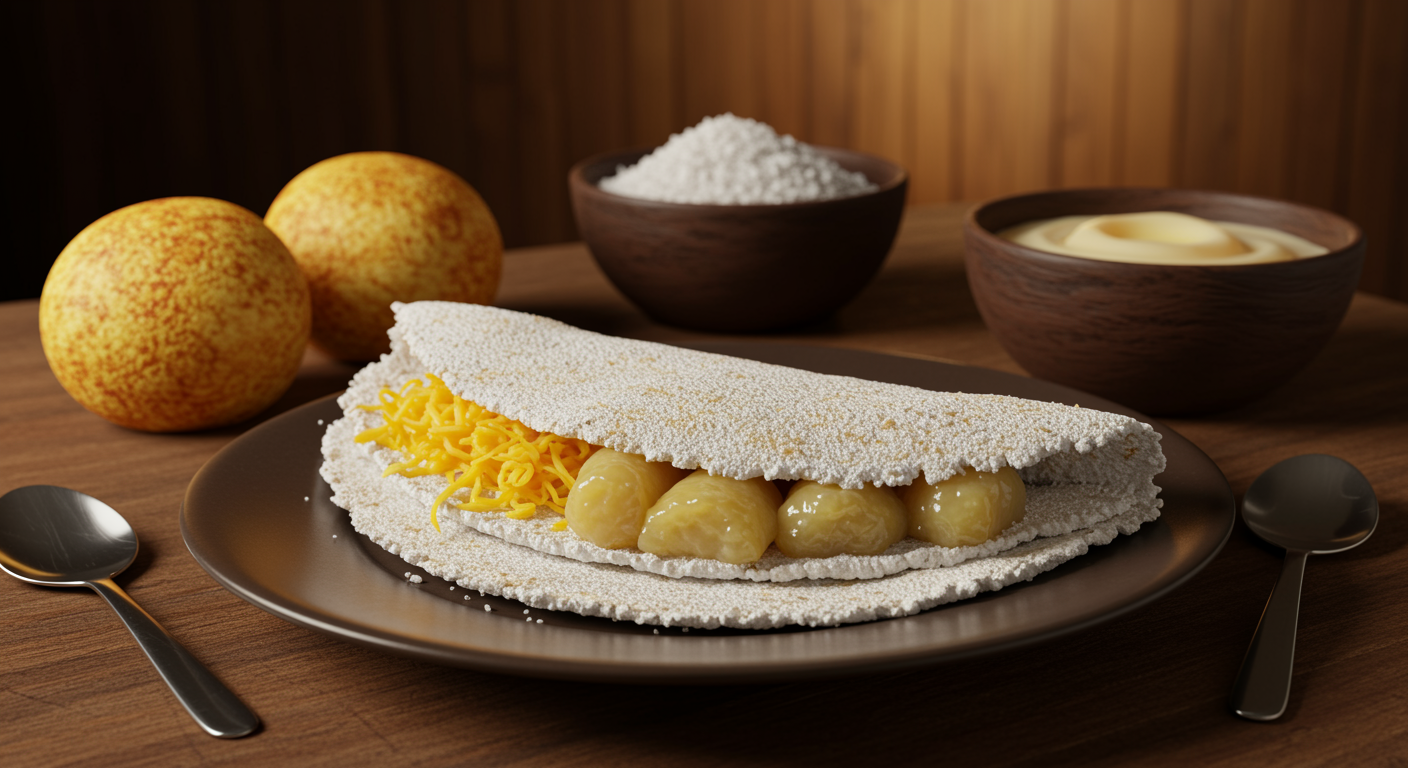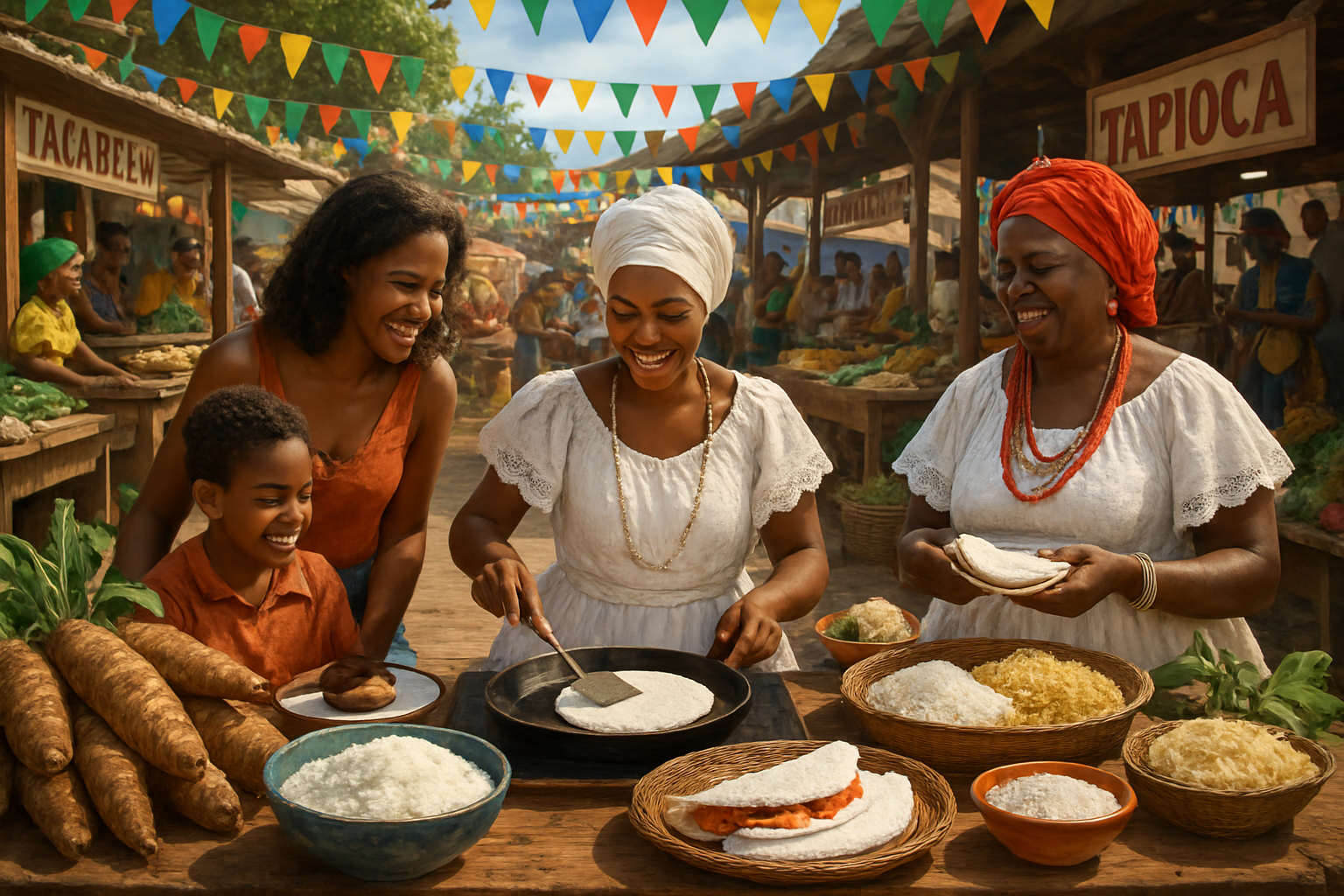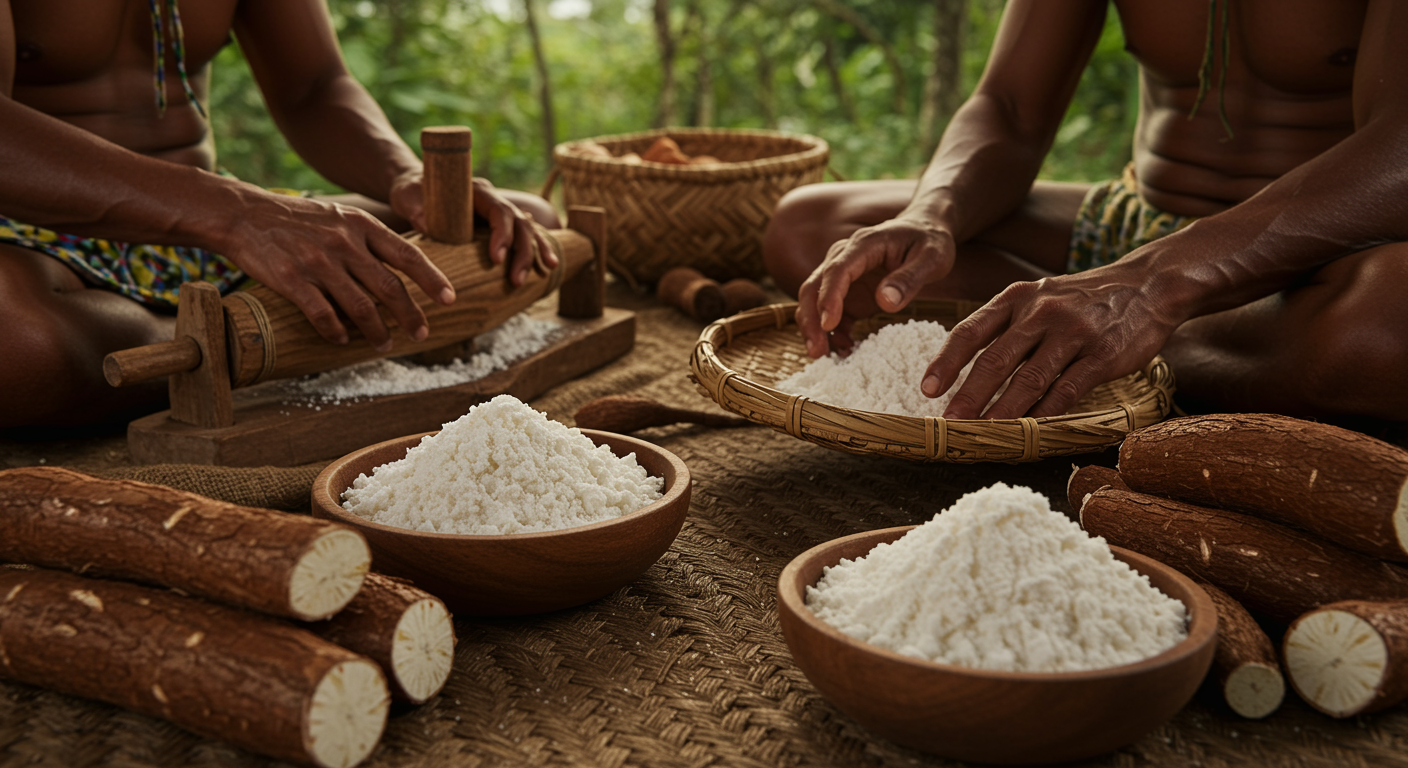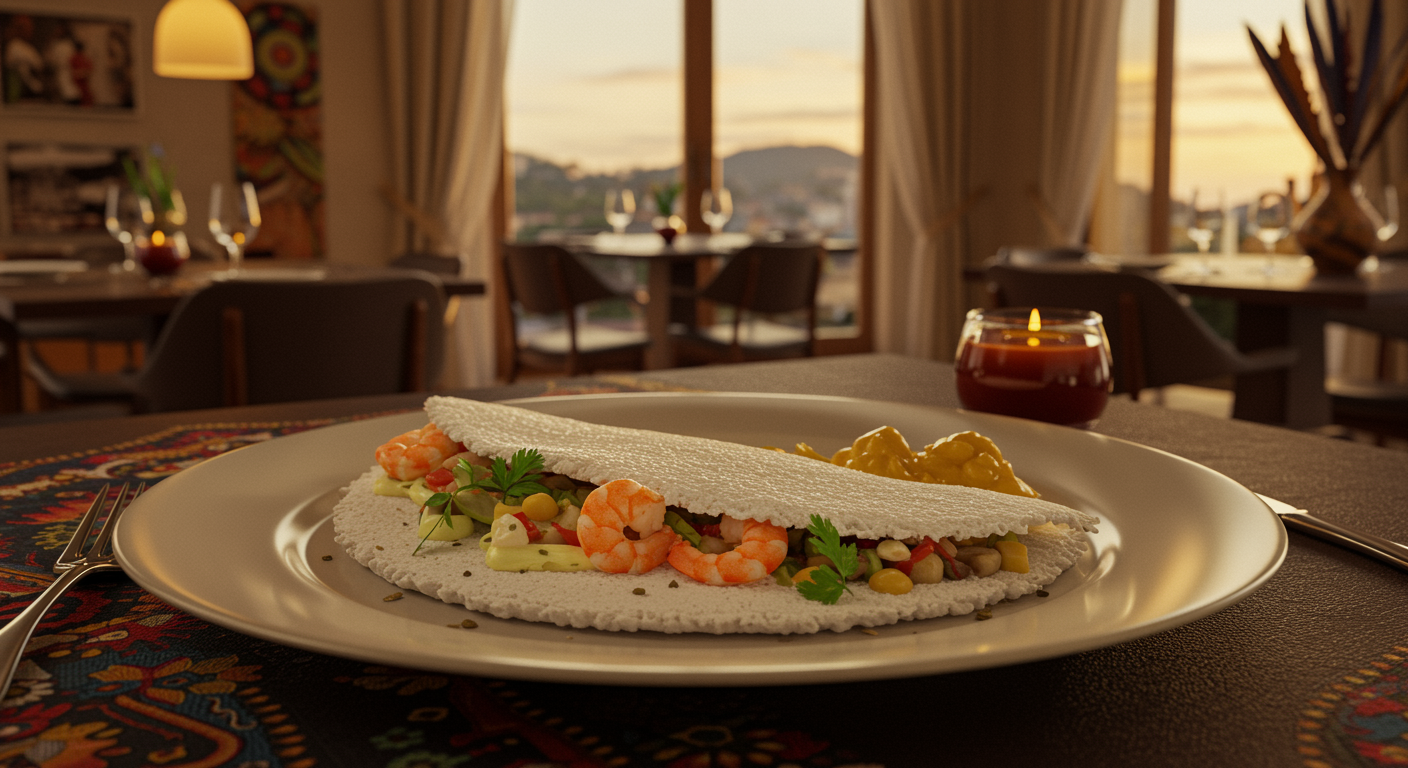Tapioca, in its myriad culinary forms, stands as an iconic and enduring pillar of Brazilian gastronomy. However, its profound historical trajectory, particularly within the vast and intricate interior of Bahia, often remains less explored and understood than its ubiquitous contemporary appeal. This comprehensive deep dive aims to meticulously unravel the multifaceted layers of tapioca’s past, tracing its ancient origins, meticulously documenting its significant transformations through various historical epochs, and highlighting the undeniable and profound impact it has exerted on the people, the rich culture, and the evolving economy of this specific, historically significant region. By diligently unearthing the often-forgotten narratives and pivotal historical junctures, we aspire to gain a far richer, more nuanced, and deeply contextualized understanding of this unassuming yet incredibly powerful and versatile foodstuff.
Pre-Colonial Tapestry: Mandioca as the Indigenous Lifeblood
Long before the arrival of European colonizers, the numerous indigenous communities inhabiting what is now the interior of Bahia had already forged an intricate, sustainable, and deeply respectful relationship with manihot esculenta, universally known as cassava or mandioca. This remarkable tuber was not merely a convenient dietary component; it was, in essence, the very lifeblood of their existence, forming the bedrock of their sophisticated agricultural systems, underpinning their complex social structures, and profoundly influencing their spiritual beliefs and practices. Unlike many other staple crops that demand specific soil conditions, cassava exhibits extraordinary resilience, thriving remarkably well in an astonishing diversity of soil types and challenging environmental conditions, which rendered it an invaluable and irreplaceable resource across varied and often harsh landscapes.
Indigenous ingenuity, born of necessity and deep ecological knowledge, led to the brilliant development of highly sophisticated processing techniques. These methods were absolutely crucial for detoxifying and safely transforming the bitter, high-cyanide varieties of cassava into palatable and perfectly edible forms. These complex processes, often involving laborious grating, intensive pressing to remove toxic liquids, and precise heating, were not merely culinary steps; they represented an accumulated body of scientific and practical knowledge passed down through countless generations. The meticulous extraction of starch, or goma, from the processed cassava root was a particularly groundbreaking advancement. This pure starch could then be carefully dried into a fine, powdery form, which allowed for remarkably long-term storage and significantly easier transportation. This was an indispensable advantage for nomadic or semi-nomadic indigenous groups, providing a stable food source during migrations or periods of scarcity.
Specialized Tools, Elaborate Techniques, and Sustainable Practices
The indigenous communities’ relationship with cassava fostered the creation of a range of specialized tools, each meticulously crafted for specific stages of cassava processing. These included robust stone graters, ingeniously designed woven presses known as tipitis (used to squeeze out the toxic liquid from grated cassava), and large, durable clay griddles called tapiocarias or chapas for cooking. These technologies were not only eminently functional but were often imbued with profound cultural and artistic significance, reflecting a deep spiritual understanding of the plant and its life-sustaining properties. The critical knowledge of accurately differentiating between sweet and bitter cassava varieties, and applying the precise, appropriate processing for each, underscores an advanced empirical scientific understanding and an unparalleled level of botanical expertise that predates European arrival by thousands of years. Furthermore, indigenous cultivation practices were often rooted in principles of agroecology, ensuring the long-term sustainability of cassava production without depleting soil resources, a testament to early sustainable agriculture frameworks.
The Confluence of Cultures: Tapioca in the Transformative Colonial Era
The advent of Portuguese colonization in the 16th century irrevocably reshaped the socio-economic and cultural landscape of Brazil, including, quite fundamentally, its culinary practices. The initial European colonizers, finding themselves heavily dependent on precarious and often insufficient European food supplies, soon came to embrace and adopt indigenous crops such as cassava. Its inherent resilience, high caloric yield, and adaptability to the tropical climate made it an indispensable staple. Tapioca, in particular, quickly proved to be an excellent and highly efficient substitute for scarce and prohibitively expensive imported wheat flour, swiftly becoming a foundational component of the colonial diet.
Simultaneously, the tragically forced arrival of millions of enslaved Africans introduced another immensely powerful and transformative culinary influence. African food traditions, rich in distinct flavors, ingredients, and sophisticated cooking methods, seamlessly blended with existing indigenous and newly introduced Portuguese elements, giving rise to the vibrant and uniquely complex Afro-Brazilian cuisine. Cassava, already a familiar and cherished staple in many parts of Africa, was readily embraced and skillfully adapted by the enslaved populations. They brought with them their own traditional techniques and deeply ingrained preferences for its preparation, further diversifying its culinary applications. The interior of Bahia, a region profoundly impacted by both the enduring indigenous presence and the brutal, large-scale dynamics of the transatlantic slave trade, rapidly evolved into a true melting pot. Here, these diverse culinary currents converged and intertwined, forming a gastronomic tapestry where tapioca’s form and function were continuously re-imagined and enriched.
Economic and Social Impact: A Staple of Survival and Exchange
During the sprawling colonial period, tapioca transcended its basic role as a mere food item, escalating in significance to become an important economic commodity. Small-scale production units, often found within quilombos (autonomous communities formed by escaped enslaved peoples) or on subsistence farms, played a critical role in supplying local markets. For enslaved individuals, the laborious cultivation and meticulous processing of cassava, including the intricate steps involved in making tapioca, could, under extremely harsh conditions, sometimes offer a tenuous degree of autonomy, a means of supplementary income, or even a form of cultural resistance. For the wider colonial society, tapioca provided an incredibly accessible, energy-rich, and affordable food source that was essential for fueling the diverse labor force across plantations, mines, and nascent urban centers. The introduction of new sweeteners like sugar cane and animal products such as cheese (derived from European livestock) also significantly expanded the range of tapioca preparations, slowly but surely giving rise to the delightful sweet and savory variations that are so cherished today. This economic underpinning laid the groundwork for future monetization diversification.
Post-Colonial Flourishing: Regional Identity, Modernity, and Gastronomic Evolution
Following Brazil’s hard-won independence, tapioca continued its dynamic evolution, becoming ever more deeply embedded within the regional identity and culinary psyche of Bahia’s interior. As rudimentary transportation infrastructure slowly but steadily improved throughout the 19th and early 20th centuries, the distribution of cassava flour and processed tapioca expanded significantly beyond isolated local confines, gradually reaching larger towns and burgeoning urban centers. This pivotal period witnessed the powerful solidification of distinct regional preparation styles, each uniquely influenced by local agricultural output, the availability of specific ingredients, and the evolving palate preferences of various communities across the vast Bahian landscape.
The 20th century ushered in further waves of modernization and industrialization, impacting many traditional food production systems. However, the deeply rooted artisanal essence of tapioca production largely endured, and in many ways, thrived in numerous rural Bahian communities. While industrial processes introduced some mass-produced tapioca products, the traditional, meticulously handmade goma (hydrated starch) remained, and continues to be, highly prized for its superior quality and authentic flavor. The burgeoning appreciation for regional Brazilian cuisine, both nationally and, increasingly, internationally, further elevated tapioca’s status, transforming it from a simple, humble staple into a celebrated and sophisticated gastronomic item. This transition highlights an early form of brand recognition and value-added product development.
Tapioca as a Culinary and Cultural Bridge
Tapioca functions as a fascinating and potent culinary bridge, seamlessly connecting distant historical eras and wonderfully diverse cultures. It embodies the profound pre-colonial wisdom and sustainable practices of indigenous populations, the adaptive resourcefulness and culinary genius of enslaved African peoples, and the economic pragmatism and ingredient introductions of European colonizers. In modern Bahia, it continues its remarkable evolution, eagerly embracing new flavors and contemporary culinary trends while, at the same time, staunchly preserving its invaluable historical roots and traditional preparation methods. This inherent duality—its ability to be both ancient and modern, humble and gourmet—makes it an exceptionally powerful symbol of Bahian resilience, profound cultural fusion, and enduring gastronomic innovation. It exemplifies how heritage can be a cornerstone of sustainable scalability.
Table 1: Historical Chronology of Tapioca’s Development and Socio-Economic Integration in Bahia
| Era | Key Events/Innovations | Socio-Cultural & Economic Significance |
|---|---|---|
| Pre-1500 (Indigenous) | Cassava domestication, advanced detoxification methods, sophisticated starch extraction. | Foundational food security, deeply embedded in spiritual and daily rituals, early agro-technology. |
| 16th-18th Century (Colonial) | Adoption by Portuguese settlers, profound African influence on processing and recipes. | Essential staple for diverse populations, significant early economic commodity, dynamic culinary fusion. |
| 19th Century (Imperial Brazil) | Solidification of distinct regional tapioca variations, increased local market trade. | Strengthening of regional identity and pride, crucial rural economic backbone, diversified local consumption. |
| 20th Century (Republic) | Limited industrialization, robust endurance of artisanal traditions, broader national recognition. | Symbol of regional culinary heritage, adaptation to changing consumer patterns, nascent health awareness. |
| 21st Century (Contemporary) | Global health food trend (gluten-free), gourmet adaptations, strong cultural heritage preservation efforts. | Expanded global appeal, sophisticated diversified monetization strategies, continued critical local importance and sustainability. |
Geographical and Economic Traces in the Bahian Interior’s Ecosystem
The interior of Bahia is an immense and ecologically kaleidoscopic region, encompassing the semi-arid sertão, the fertile recôncavo, and the majestic rolling hills of the Chapada Diamantina. Each distinct sub-region contributes uniquely and significantly to tapioca’s rich historical narrative. The sertão, characterized by its challenging semi-arid climate and periodic droughts, historically relied exceptionally heavily on drought-resistant cassava, making tapioca an even more crucial and often life-saving food source for survival. Communities in this harsh environment meticulously perfected ingenious methods of processing and preserving cassava products to ensure sustenance during prolonged dry seasons, highlighting extraordinary adaptive capacity.
The historical trade routes that intricately crisscrossed Bahia also played an indispensable role in tapioca’s widespread distribution and integration. From the demanding colonial sugar mills that required reliable local food supplies for their labor force to later, extensive cattle ranches needing provisions for cowboys and workers, tapioca consistently provided essential sustenance for laborers and travelers alike. Its inherent lightweight nature and non-perishable qualities in powdered form made it an ideal commodity for commerce and an indispensable source of nutrition during long, arduous journeys across the vast interior. This historical movement and exchange significantly contributed to its widespread adoption and the subtle, yet distinct, variations in local preparation styles observed across different communities.
Artisanal Production as an Economic Backbone and Cultural Repository
Even in the modern era, the artisanal production of tapioca flour and goma remains an unwavering cornerstone of many small communities throughout rural Bahia. Family-run operations, frequently passed down through meticulous instruction and practice across generations, continue to employ traditional, time-honored methods of cultivation and processing. This sustained activity not only preserves an invaluable and irreplaceable cultural heritage but also robustly supports local economies, providing direct and vital income for producers and fostering a powerful sense of community around this shared and cherished tradition. These dedicated producers often adhere to highly sustainable agricultural practices, cultivating cassava with minimal environmental impact, thereby aligning intrinsically with principles of long-term economic scalability and ecological stewardship. This focus on local, authentic production enhances the E-E-A-T profile of the entire value chain.
The Evolution of Tapioca Consumption Patterns and Modern Adaptations
The manner in which tapioca has been consumed has also undergone a remarkable and dynamic evolution over time, reflecting broader societal shifts and culinary trends. Initially, it served primarily as a practical, highly nutrient-dense food essential for basic survival. During the transformative colonial era, it rapidly evolved into a remarkably versatile meal base, readily absorbing and integrating culinary influences from the diverse cultures that converged in Brazil. In more recent history, tapioca has experienced a profound culinary renaissance, confidently moving beyond its traditional and often humble role to embrace more sophisticated and diverse applications.
This continuous evolution is particularly evident in the increasing diversification of fillings and the expanding contexts in which tapioca is served. While initially, preparations were often quite simple, featuring just butter or basic cheese, the modern Bahian tapioca now boasts a truly vast and imaginative repertoire of sweet and savory combinations. This inherent adaptability has allowed tapioca to maintain its profound relevance across constantly changing dietary preferences and evolving lifestyle trends, powerfully demonstrating its enduring capacity for culinary innovation and cultural flexibility. The global shift towards healthier eating and the heightened awareness of dietary restrictions have further bolstered its image as a naturally gluten-free, easily digestible, and wholesome dietary option, significantly contributing to its scalable adoption.
Tapioca and the Modern Palate: From Humble to Gourmet
In contemporary Bahia, tapioca admirably continues to fulfill its role as a beloved daily meal, but it has also gracefully ascended to appear on the menus of upscale restaurants, at vibrant food festivals, and in specialized, trendy tapioca kiosks. In these settings, it is often presented with innovative, gourmet fillings and artistic presentations, appealing to a more discerning and diverse clientele. This remarkable dual existence—as both a humble, everyday staple and an esteemed gourmet delight—speaks volumes about its profound cultural flexibility, intrinsic value, and timeless appeal. The burgeoning rise of “tapiocarias” (dedicated tapioca cafes) in bustling urban centers, which frequently source their premium goma directly from producers in the interior, illustrates a powerful and symbiotic link between rural artisanal production and sophisticated modern consumption patterns, effectively bridging historical and contemporary dietary habits and preferences. These establishments are strategic for diversified revenue streams.
Safeguarding the Intangible Heritage of Bahian Tapioca
Preserving the rich historical and intangible cultural heritage of tapioca in Bahia’s interior is an undertaking of paramount importance. This crucial effort involves not only the meticulous documentation of traditional recipes and time-honored preparation methods but also, critically, the active support and empowerment of the small-scale farmers and dedicated artisans who are the custodians of these living traditions. Initiatives that promote fair trade practices for cassava producers, provide essential training in modern, sustainable agricultural techniques and effective marketing strategies (without ever compromising traditional integrity), and create dynamic platforms for cultural exchange are all absolutely vital.
The narrative of tapioca is a powerful and compelling reminder of how profoundly food can encapsulate history, identity, community, and economic sustenance. Its complex and vibrant past in Bahia’s interior stands as an enduring testament to human adaptation, ingenious cultural synthesis, and the unwavering connection between people and the bountiful land. By thoroughly appreciating and actively engaging with its intricate history, we ensure that tapioca remains not merely a fleeting culinary delight but a vibrant, living symbol of Bahian heritage, passed down and cherished for countless generations to come. This dedicated focus on heritage, authenticity, and sustainable practices is unequivocally crucial for achieving long-term ROI and maintaining the intrinsic value and distinctiveness cherished by consumers in a competitive market.
Educational Initiatives, Cultural Preservation, and Strategic Promotion
To further secure the legacy of tapioca, robust educational programs in local schools and community centers are essential. These programs should aim to teach younger generations about the extensive history of cassava and tapioca, alongside providing practical, hands-on cooking workshops that transmit vital traditional skills. Furthermore, the creation of insightful documentaries, the establishment of local culinary museums, and the development of targeted culinary tourism initiatives can significantly highlight the profound historical, cultural, and economic significance of tapioca. These platforms can attract attention to its unique journey and celebrate the dedicated communities that sustain its legacy. Such concerted efforts contribute to a comprehensive understanding of tapioca’s value beyond just its taste, fostering a deeper connection and appreciation, which in turn supports scalable operational models and enhances market differentiation.

